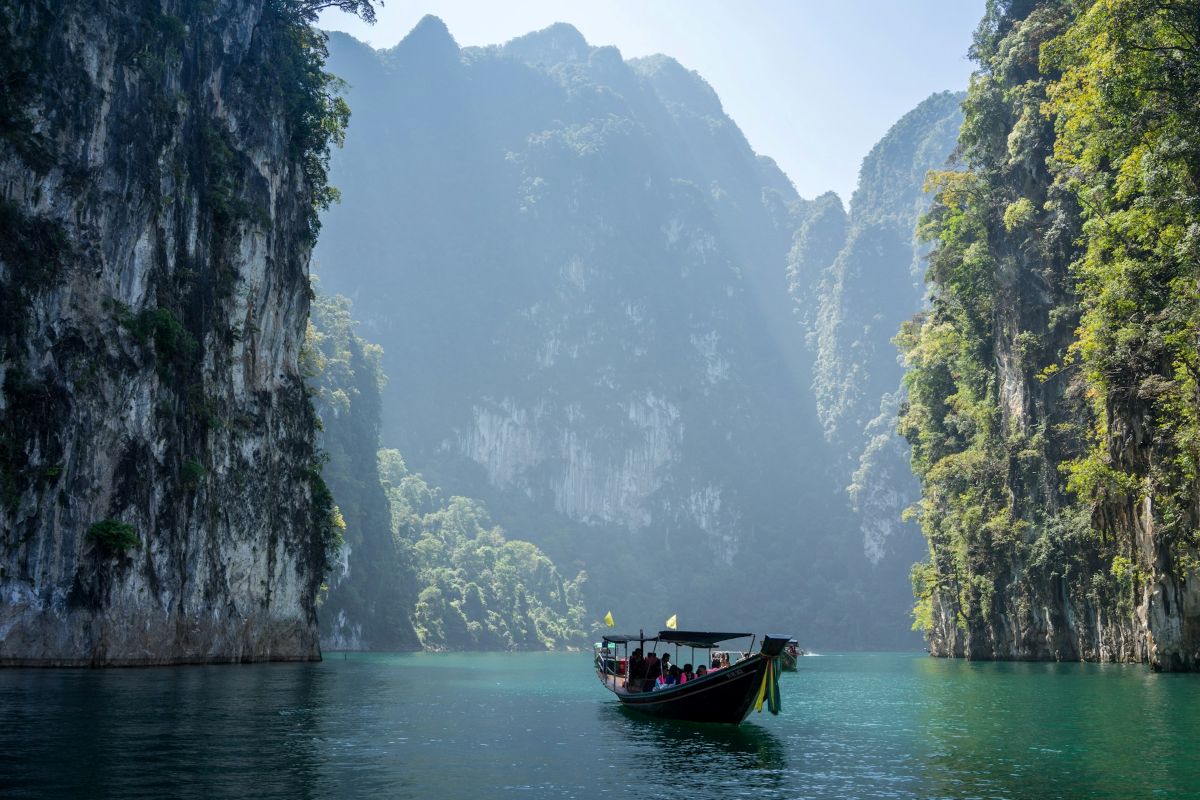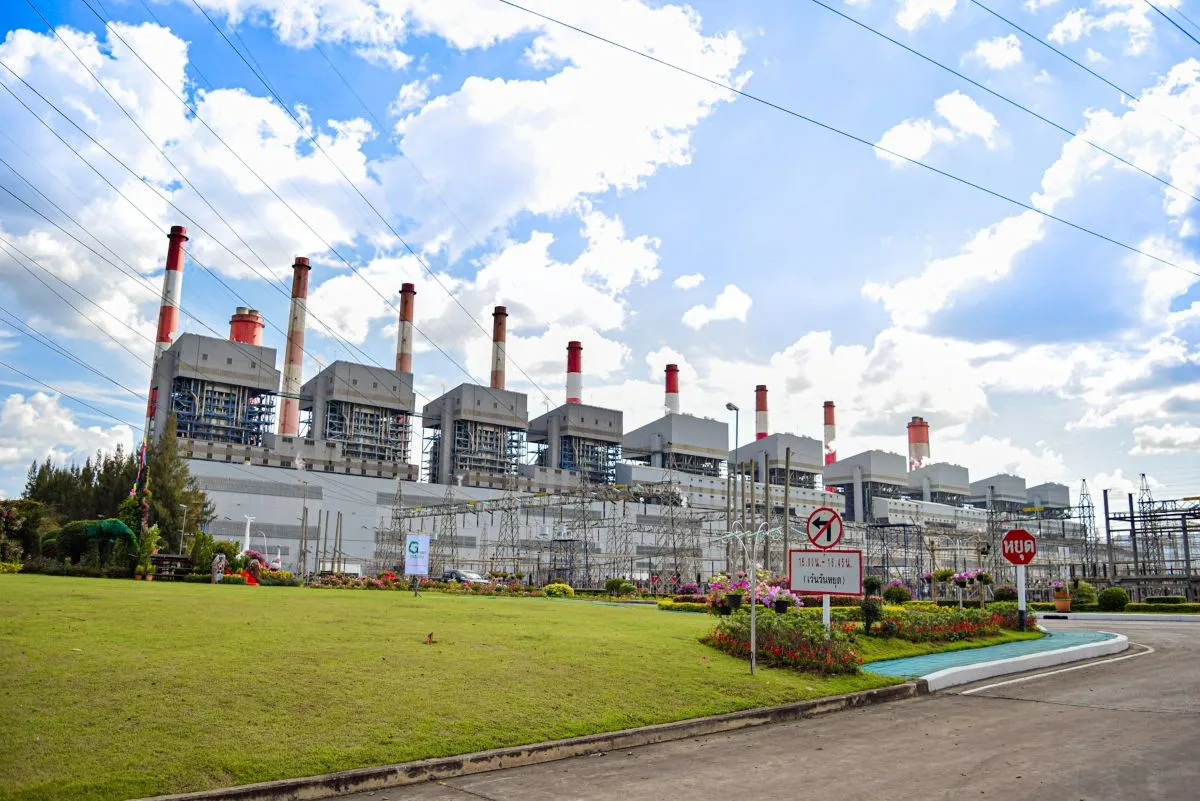Table of Contents
ToggleThe Thailand energy sector is undergoing a profound transformation, signaling a decisive shift away from fossil fuel dependency and toward a future powered by renewable energy. As the country navigates the complex interplay between economic development, energy security, and environmental sustainability, it is emerging as one of Southeast Asia’s most proactive nations in clean energy adoption. This transition is not only about technology or policy, it is about redefining Thailand’s energy identity in an era where resilience and climate responsibility are inseparable.
Driven by both domestic priorities and global commitments, Thailand is working to modernize its infrastructure, diversify its energy portfolio, and stimulate innovation across public and private sectors. The momentum behind these efforts is unmistakable, as the nation sets ambitious goals for decarbonization and renewable integration.
Read our Thailand country guide
Understanding Thailand’s Current Energy Landscape
Natural Gas and Legacy Infrastructure
As of 2022, natural gas continued to dominate the Thailand energy sector, accounting for 33.3 of total electricity production according to the International Energy Agency. This reliance stems from decades of investment in gas-fired power plants and the availability of domestic gas fields, particularly in the Gulf of Thailand. However, domestic reserves are dwindling, and the rising cost of imported liquefied natural gas (LNG) poses a growing risk to long-term energy affordability and stability. These pressures are prompting a reevaluation of the country’s energy fundamentals, nudging policymakers and investors alike toward alternatives.
Renewable Energy’s Expanding Role
While fossil fuels still provide the backbone of Thailand’s energy supply, renewables are gaining ground steadily. By 2022, renewable energy sources made up 18.3% of total energy generated in Thailand, a trend of 169% compared to the year 2000. Hydropower leads the way in renewable energy generation, followed by solar photovoltaics, biomass, wind, and biogas. This shift is driven by early government support through policies such as feed-in tariffs, net metering, and rooftop solar incentives. Thailand’s progress in scaling renewables, particularly in solar adoption, demonstrates its ability to expand clean energy sources when clear policy and investment signals are present.
Regional Imports and Energy Mix Diversification
In addition to domestic generation, Thailand imports electricity from neighboring countries such as Laos, primarily in the form of hydropower. This cross-border energy flow not only supplements local supply but also offers a lower-emission alternative to coal and oil. Nevertheless, coal and petroleum still account for a significant portion of the national mix, particularly in industrial and transportation sectors. The challenge, therefore, is not only to boost renewables but also to phase out legacy fuels in a balanced and economically viable manner.
Read more: How Businesses Can Attract Top Energy Talent
Strategic Energy Initiatives Shaping the Transition
The National Energy Plan (NEP) 2024
Unveiled in October 2024, Thailand’s National Energy Plan (NEP) represents the most integrated and forward-looking blueprint for energy transformation in the country’s history. The NEP brings together five key policy tracks—the Power Development Plan (PDP), Alternative Energy Development Plan (AEDP), Energy Efficiency Plan (EEP), Natural Gas Supply Plan, and Oil Plan—into a unified vision for 2024 to 2037. The headline target is to reduce fossil fuel reliance to just 48 percent of the energy mix while boosting renewables to 51 percent. To achieve this, the government will encourage a wave of investment in solar farms, wind corridors, bioenergy, and energy-efficient technologies.
This long-term strategy is backed by an estimated investment of 2.9 trillion baht (approximately USD 87 billion), earmarked for modernizing the power grid, deploying smart meters, and integrating digital energy management systems. Such investments are essential for creating a more responsive, decentralized, and consumer-driven energy landscape. Moreover, the NEP emphasizes energy justice—ensuring that rural communities, small businesses, and low-income households benefit from cleaner, more reliable energy services. The plan’s comprehensiveness positions Thailand as a serious contender in the race toward net zero and aligns the Thailand energy sector with global decarbonization trends, while ensuring affordability and energy justice for all socioeconomic groups.
Read more: Top 7 Solar Energy Projects in the Asia-Pacific Region
Small Modular Reactors: A Future Energy Option
Another bold move came in May 2024, when Prime Minister Srettha Thavisin announced Thailand’s intention to explore Small Modular Reactors (SMRs) as a low-carbon baseload option. These next-generation nuclear technologies are compact, safer by design, and suitable for countries with limited space or public skepticism toward conventional nuclear power. Thailand is currently conducting feasibility studies, engaging with international nuclear safety organizations, and building public awareness around the benefits and risks of SMRs.
While deployment is likely years away, the inclusion of nuclear in Thailand’s long-term energy strategy demonstrates a pragmatic approach to decarbonization. SMRs could eventually help stabilize the grid during periods of low renewable generation, while also reducing dependence on imported LNG or coal. The success of this initiative will depend not only on technical and regulatory readiness but also on winning public trust through transparency and dialogue. If public acceptance and safety frameworks can be secured, nuclear energy could play a stabilizing role in the evolving Thailand energy sector.
Clean Energy Trading Pilot
In June 2024, Thailand took a step toward energy market liberalization with the launch of a clean energy trading pilot. Under this program, up to 2,000 megawatts of renewable electricity will be traded in a controlled framework, laying the groundwork for broader market participation. This initiative is especially important for corporate buyers seeking long-term power purchase agreements (PPAs) as part of their decarbonization goals.
The trading platform also aligns with Thailand’s ambition to become a clean energy trading hub for ASEAN, leveraging its central geographic position and advanced grid infrastructure. In the future, this could evolve into a transnational marketplace that incentivizes cross-border energy flows, facilitates carbon pricing, and drives regional competitiveness in green manufacturing.
Such mechanisms could transform the Thailand energy sector into a dynamic, decentralized marketplace where independent producers, grid operators, and consumers all participate in energy exchange. This would not only boost efficiency but also increase investment in grid-ready renewable capacity.
Read more: What ASEAN Member Countries Can Learn from Vietnam’s Renewable Energy Boom
International Collaborations and Global Energy Diplomacy
Diversifying LNG Supply: Partnership with Oman
Thailand is pursuing energy security not only through diversification of energy types but also by expanding its portfolio of international suppliers. In September 2024, PTT Public Company Limited signed a five-year agreement with Oman LNG to import 300,000 metric tons of LNG annually starting in 2025. This move adds critical redundancy to Thailand’s LNG supply chain, which has traditionally relied heavily on Qatar and the United States. Talks are also underway to extend the agreement by nine more years, further anchoring Oman as a long-term strategic partner.
These import agreements provide breathing room as Thailand ramps up domestic renewable capacity and navigates geopolitical uncertainties that could disrupt energy trade. They also offer opportunities to negotiate better pricing and logistical terms, especially in a volatile global gas market.
While the long-term vision of the Thailand energy sector is to reduce fossil fuel reliance, short- and medium-term energy security remains a priority. Diversified LNG imports help ensure stable pricing and uninterrupted supply during the transition period.
ASEAN Power Grid and the LTMS-PIP Project
Thailand continues to play a pivotal role in the Lao-Thai-Malaysia-Singapore Power Integration Project (LTMS-PIP), a flagship initiative aimed at creating a connected electricity grid across ASEAN. Under this agreement, Thailand serves as a transmission hub for renewable electricity—particularly hydropower—exported from Laos to Malaysia and Singapore. The project has been lauded as a practical step toward realizing the ASEAN Power Grid, a long-standing regional goal.
Beyond infrastructure, the LTMS-PIP has strategic value. It enhances energy diplomacy, supports carbon neutrality goals across member states, and opens up potential revenue streams through transmission tariffs and balancing services. As energy demand across the region grows, Thailand’s role in this network will only become more critical.
Read more: The Vietnam Energy Sector: A Rapid Transformation Towards Sustainability and Growth

Corporate Leadership in the Clean Energy Shift
PTTEP’s Green Investments
Thailand’s energy transition is not being driven by government policy alone. Major state and private enterprises are actively redefining their roles in a low-carbon economy. In January 2025, PTT Exploration and Production (PTTEP) announced a sweeping $5.3 billion investment plan to boost upstream exploration and accelerate clean energy initiatives. This is part of a broader five-year capital expenditure program worth $21.2 billion.
Among PTTEP’s priorities are pilot projects in green hydrogen, carbon capture and storage (CCS), and international energy exploration, particularly in the Middle East and Southeast Asia. These efforts position PTTEP as more than just a legacy oil and gas player, they reflect a corporate pivot toward energy technologies that can support net-zero goals.
PTTEP’s evolution also reflects a broader trend across the Thailand energy sector, as oil and gas firms adapt their business models to meet climate imperatives. The focus is shifting from volume to value, with innovation, sustainability, and efficiency driving the next chapter of growth.
Private Sector Innovation
Beyond PTTEP, other Thai conglomerates are taking bold steps into the clean energy arena. Companies such as BCPG, Energy Absolute, and Gulf Energy are investing heavily in solar energy production, utility-scale battery storage, and electric vehicle infrastructure. Their efforts are helping to build an ecosystem that supports clean energy from generation to end use.
Energy Absolute, in particular, is emerging as a national leader in EV manufacturing and battery development. By aligning industrial strategy with energy policy, these companies are helping to decouple economic growth from carbon emissions—a critical component of Thailand’s green transition. The private sector’s role in shaping the Thailand energy sector cannot be overstated, especially as demand for sustainable energy solutions continues to rise.
Read more: The Indonesia Energy Sector: Growth, Opportunities, and Investment Potential
Thailand Energy Sector’s Challenges on the Road to Sustainability
Grid Modernization and Infrastructure
One of the major technical hurdles Thailand faces is the modernization of its electricity grid to accommodate variable renewable energy. Without smart grids, digital controls, and robust transmission systems, high levels of solar and wind energy could lead to instability and energy losses. Investment in grid flexibility and storage solutions will be vital to avoid bottlenecks and blackouts as renewable penetration increases.
Financing and Investment Risks
Despite strong policy signals, attracting the necessary capital for large-scale green infrastructure remains a challenge. Emerging technologies like hydrogen and SMRs are still perceived as high-risk by many investors. To mitigate these concerns, Thailand will need to offer targeted incentives, de-risking mechanisms, and transparent regulatory processes that reassure both domestic and foreign financiers.
Nuclear Resistance and Public Dialogue
Public opinion could pose a barrier to nuclear energy development, even in the form of SMRs. Transparent, science-based engagement will be essential to address fears, correct misconceptions, and build consensus around nuclear safety. Civil society must be given a voice in shaping the regulatory landscape for these emerging technologies.
Regulatory Streamlining
Thailand must also address bureaucratic hurdles that delay project approvals and complicate energy market entry. Consistency in policy, clear timelines for permitting, and coordination between ministries will be essential to maintain investor confidence and project momentum.
Read more: What Does Japan’s Energy Industry Look Like: A Deep Dive
Conclusion: A Green Energy Future Within Reach
The Thailand energy sector stands at a pivotal moment in its development, propelled by a convergence of political will, private sector innovation, and international cooperation. The country is not merely adapting to the energy transition—it is helping to define it for the ASEAN region. While challenges remain, the foundation is being laid for a cleaner, smarter, and more resilient energy system.
With continued investment, regulatory clarity, and public engagement, Thailand has the potential to become a regional leader in the global clean energy transition. As it follows this path, the nation offers a compelling example of how emerging economies can achieve energy security without compromising environmental stewardship.
To effectively navigate the dynamic Thailand energy sector and maximize your investment potential, consider leveraging our Employer of Record services. We provide comprehensive support, from legal compliance to human resource management, enabling you to focus on strategic growth and innovation.
Contact Eos Global Expansion today. Check our services here or book a free consultation now.
Photo by Nopparuj Lamaikul on Unsplash






